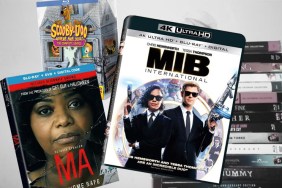There wasn’t an explosion at the end of Planet of the Apes, but they did blow it up. Damn them! Ever since Charlton Heston pounded on the sand at the site of the Statue of Liberty, Hollywood has been obsessed with demolishing landmarks.
(I’m sure I’m missing earlier ones, but I wanted to make a pun and Kong only climbed The Empire State Building and Cary Grant merely hung from Lincoln’s nose in North By Northwest… he didn’t break it off).
It makes perfect sense why, really. A landmark is a place that’s been widely visited. Collectively, an audience understands its largeness (indeed, that’s the greatness of the King Kong finale). It also gives you a location without an extra scene or line of dialogue. A landmark can get so many various points across and fast. It’s a boon in storytelling.
If a landmark is destroyed, most likely someone in the audience has a personal memory also crumbling or blowing up. It can personalize an act of destruction and give you an extra gasp (or laugh). That’s what those in the biz would call “more bang for your buck!”

The apex of this destruction was no doubt the 1990s. It either began with the exploding White House in Independence Day or maybe, in a way, this is where it plateaued. That was the biggest selling point of the movie. It was The White House blowing up. To bits. To a hole in the ground. It was the poster. It was the key point of every advertisement.
When I was a kid I purchased the VHS copy of Independence Day and it had a hologram on the front. At one angle The White House was intact. Tilt it and it was a fiery inferno. At that time the reaction was a guttural, “Awesome!” Fucking hi-five whoever else in the video aisle. Maybe invite ‘em over to watch it. Because it’s awesome.

Then came Tim Burton’s Mars Attacks! And this was used for quick jokes – such as the alien ships setting up the rocks of Easter Island for bowling – in a manner that the 50’s B-movie alien invasion predecessors didn’t have the budget to do. Burton did. So he strung many together. It was landmark destruction on the level of a banana peel joke.
There are many other examples, but I’m always told to get to the point. (Okay, besides the point that, yes, The White House destruction in Independence Day still is a guttural, “Awesome!”)
9/11 was a collective experience of the reality of actual destruction. That disbelief in the voice on the television when the second plane hits. The silence as the towers fell. The ash everywhere. If you saw that in a movie it would tie in the fact that you might be familiar with the Twin Towers. You might’ve looked up at them at a moment when the sun appeared to hover between them. It’d provide that extra tension or revenge lust.
In reality, when it happened, it has a similar effect except there’s no immediate blanket of watching someone make it all okay. In reality, a very high percentage of people in the US – and the world – might’ve known more than just the building, but also someone nearby, or maybe even inside. Or even someone inside. Even if not, most reactions were stunned silence. Even on television. Where silence is never allowed.
That need for silence in terrorizing situations has translated to film ever since.
I would say, largely for better effect. Yes, there’s still major explosions and hi-fiving awesomeness, but if something happens in a city, or within a landmark where people are, we need the extra mile from our filmmakers in moments of devastation. In a way, it’s kind of ridiculous that it was never asked this of them before. The silence beforehand. The ringing after. The faces of civilians. The extra humanity.

In the wake of 9/11 there were numerous films, The Sum of All Fears, Bad Company, Collateral Damage and Big Trouble that pushed their release date due to how they filmed bombs going off in public places. The wave of films shot after 9/11 changed their tone.
Oliver Stone shed his cynicism for World Trade Center, Adam Sandler shed tears in Reign on Me. The big tentpole summer movies with centerpiece attacks (a la Independence Day)? They shifted. They dropped silence in before, and maybe during explosions. They featured community uprisings among devastation, instead of just focusing on the hero jetting off to save the day, far removed from ground zero.

Bomb sequences either came without any set-up whatsoever to entirely devastate and disorient the viewer (a la 2004’s Children of Men) or they elongated, including extra human devastation by focusing extra closely on the surrounding civilians, not as blurry extras but as extra players in not only the devastation (celebrated in 2005’s War of the Worlds, jeered in 2013’s Man of Steel) but also the putting back together (The Dark Knight Rises).
The Dark Knight Rises? The civilians and police officers collected amongst the rubble to take back Gotham following an organized attack. Granted, I have major problems with The Dark Knight Rises: the demonizing of the lower classes as bloodthirsty folks whose biggest desire is to kill off the rich, the Wayne Enterprises hyper-militarism that really hugs those pesky 60 documented words (post 9/11) that basically say that we can attack any person at will, and that – ultimately – the ruling status quo must be protected. However, prior to our own monumental, personal destruction I don’t think any Batman film would focus on characters such as Foley (Matthew Modine) during a climactic showdown where Batman is moreso in the rafters, while civilians themselves rise up to eradicate the malfeasance.

With the new Godzilla, however, we’ve reached an interesting crossroads. This is a terror that combines an old school thought – hide the threat as long as you can – with new school thought – treat destruction delicately. The marketing campaign – whether it’s narrated by David Strathairn calling for unity and courage or the one narrated by Bryan Cranston that’s shouting a distrust of government – has largely hidden the destruction: the big ass monster. Instead, it’s giving us tension from unawareness. It’s Clive Owen walking away from a cafe in Children of Men moments before it blows up. It’s totally random. Without explanation. And chaotic. Like these attacks are. But it promises to show the payoff: the monster behind the destruction of San Francisco.
Monsters have become so common that they’re frequently many at once and their terror is no longer striking. They fill the screen in The Lord of the Rings series, World War Z, etc. It’s numbing. If a camera pans out in these new films with monsters and zombies, it’d be like playing Where’s Waldo? to find the hero amongst all the CGI creatures.

This Godzilla promises to take us back to one singular terror. Provide gravitas for the destruction that that terror wields upon us and continue the gravitas in how we react. And, by all accounts, it still hides most of the actual monster from us for half of it’s run time.
Terror and destruction has already shifted. It’s at a calculation of “more emotional faces” + “more film tricks to enhance human devastation” = larger payoff from destruction. If Godzilla is successful perhaps it might shift again, to “more emotional faces” + “more film tricks to enhance human devastation” x “hiding the largeness of the threat” = more bang for your buck. The T-Rex made water quake in Jurassic Park. Godzilla just might knock it over.
But while we’ve required more emotional build up and release from our filmmakers for destroying cities and monuments, it’s telling that we’re so distrustful of our elected officials that we can immediately go back to popcorn pyrotechnics on The White House via two 90s throwback films from last year: White House Down and Olympus Has Fallen.
Perhaps it’ll all come full circle when Godzilla stomps The White House. Without a soundtrack. Coming to theaters 2019. (2020 is an election year. Why so serious?)
Brian Formo is a featured contributor on the CraveOnline Film Channel. You can follow him on Twitter at @BrianEmilFormo.







